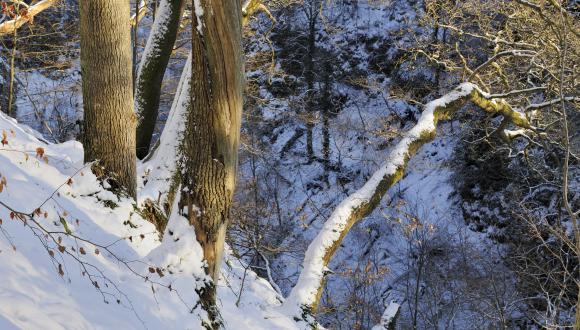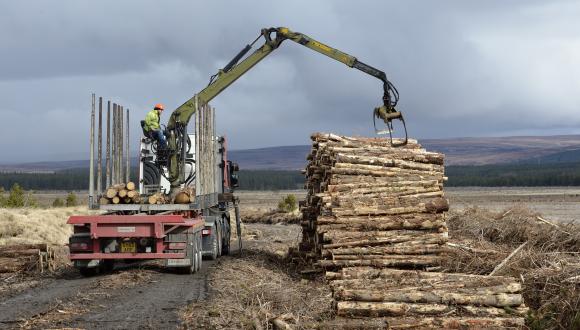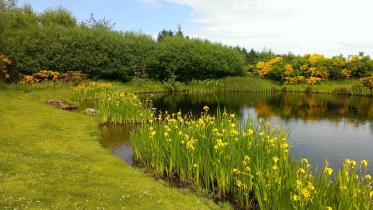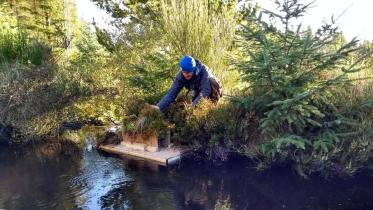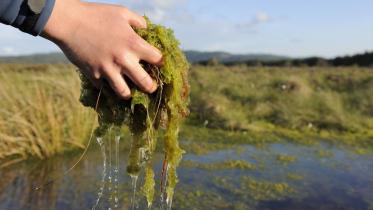Woodland condition
Not all of Scotland’s woodlands are in as good condition as they might be, because of problems and poor management.
Overgrazing or undergrazing
Overgrazing by wild deer or domestic livestock can lead to a:
- loss of species in the ground flora
- simplified woodland structure without shrubs or climbing species
If all grazing animals are removed following chronic overgrazing, competitive ground flora species can respond rapidly. For example, bracken or the grass Molinia caerulea will grow thickly and prevent tree seeds from germinating.
Constant browsing of seedlings and saplings can, over a long time, lead to a lack of young trees. Ultimately, this can cause the canopy to break down and gradual loss of the woodland area.
Undergrazing can result in dense growth of bramble or other shrubs. These will then shade out ground flora and lower plants growing on the ground or on tree trunks.
Learn more about grazing as an aspect of hill farming
Find out about deer management
Invasive plants, animals and pathogens
Rhododendron ponticum and its invasive hybrids can form dense thickets, shading out ground flora, lower plants and preventing tree regeneration. Rhododendron is seen as a major problem as it’s widespread and abundant in woodlands and adjacent open habitats across Scotland.
Other invasive non-native species like Japanese knotweed and non-native conifer species can have a similar impact but are much more localised.
Native species can cause problems too. Bracken can shelter woodland species like bugle and violets and be a valuable habitat for butterflies like the pearl-bordered fritillary. But when too dense it casts a deep shade and a litter layer can build up, stopping anything from growing beneath.
The grey squirrel, an invasive animal:
- carries the squirrel pox virus, which kills red squirrels
- eats bark from tree trunks and branches, causing great damage to woodlands
Phytophthora ramorum and Phytophthora kernoviae are spread by rhododendron and can also infect native trees. The pathogens have also been found on our native blaeberry.
Read about Forestry and Land Scotland’s fight against rhododendron
View a practical guide to Managing and controlling invasive rhododendron
You can also read our joint report, A critical review of work undertaken to control invasive rhododendron in Scotland
Fragmentation and isolation
Some of our woods are very small and, especially in the Lowlands, may be isolated from other semi-natural habitats. Smaller woods are more likely to lose populations of species, and isolated woods are less likely to acquire new populations from nearby habitats.
Learn about the importance of habitat networks
Climate change
Climate change will affect woodlands and other habitats in ways we can’t yet fully understand. But it’s likely that new pests will arrive and different species of tree will be more or less affected. We must employ a range of actions to best protect our woodlands and help them to adapt to new and dynamic conditions.
Read more about woodland and climate change
Neglect or lack of management
Most of Scotland’s woods have been managed in some way during their lifetime – for timber, charcoal, grazing or other products and services. Their structure and make-up today result from centuries of interaction with people and livestock.
The cost of management, and the low value of many woodland products, means that it’s often not economically viable to continue to manage woods. This doesn’t always lead to a decline in their value for wildlife, but it may do.
Woodlands that aren’t managed may:
- become more vulnerable to overgrazing or invasive species
- suffer the loss of ground flora species or decline of mature trees due to shading out or competition from the uncontrolled growth of young trees
We can tell how woodlands are doing from:
- site condition monitoring – the main reasons for failure to reach favourable condition are overgrazing and invasive non-native species
- Native Woodland Survey of Scotland – carried out by Forestry Commission Scotland from 2006 to 2013
- Forest Condition annual survey – carried out by Forestry Commission Scotland from 1987 to 2006
